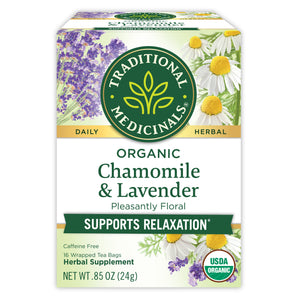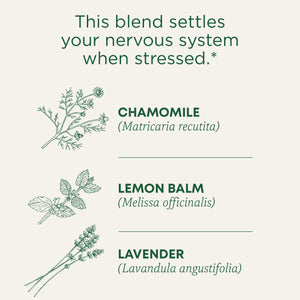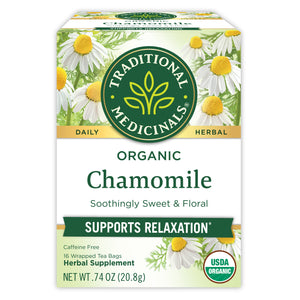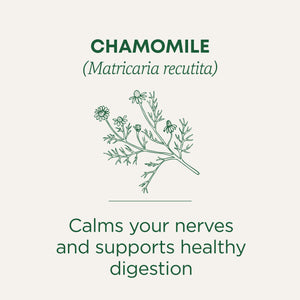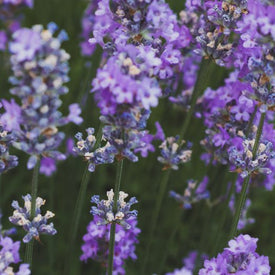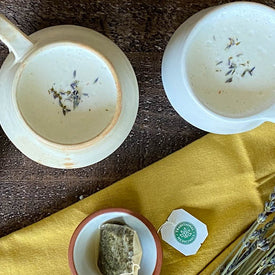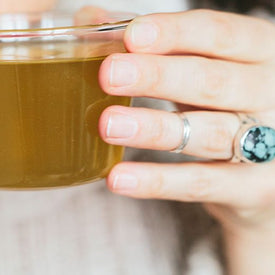While making a cup of tea may sound like a small task, rituals like these can crescendo into a major lifestyle change. Taking the time to break for tea each day provides a few moments to reflect and get grounded. On days when we need to soothe and calm our mind, body and spirit, we like to enjoy our Chamomile with Lavender tea. This blend works to calm the nervous system and to support digestion.* We believe in the power of these plants, and so did many folks who came before us. Chamomile and lavender have been used for thousands of years, because they work.
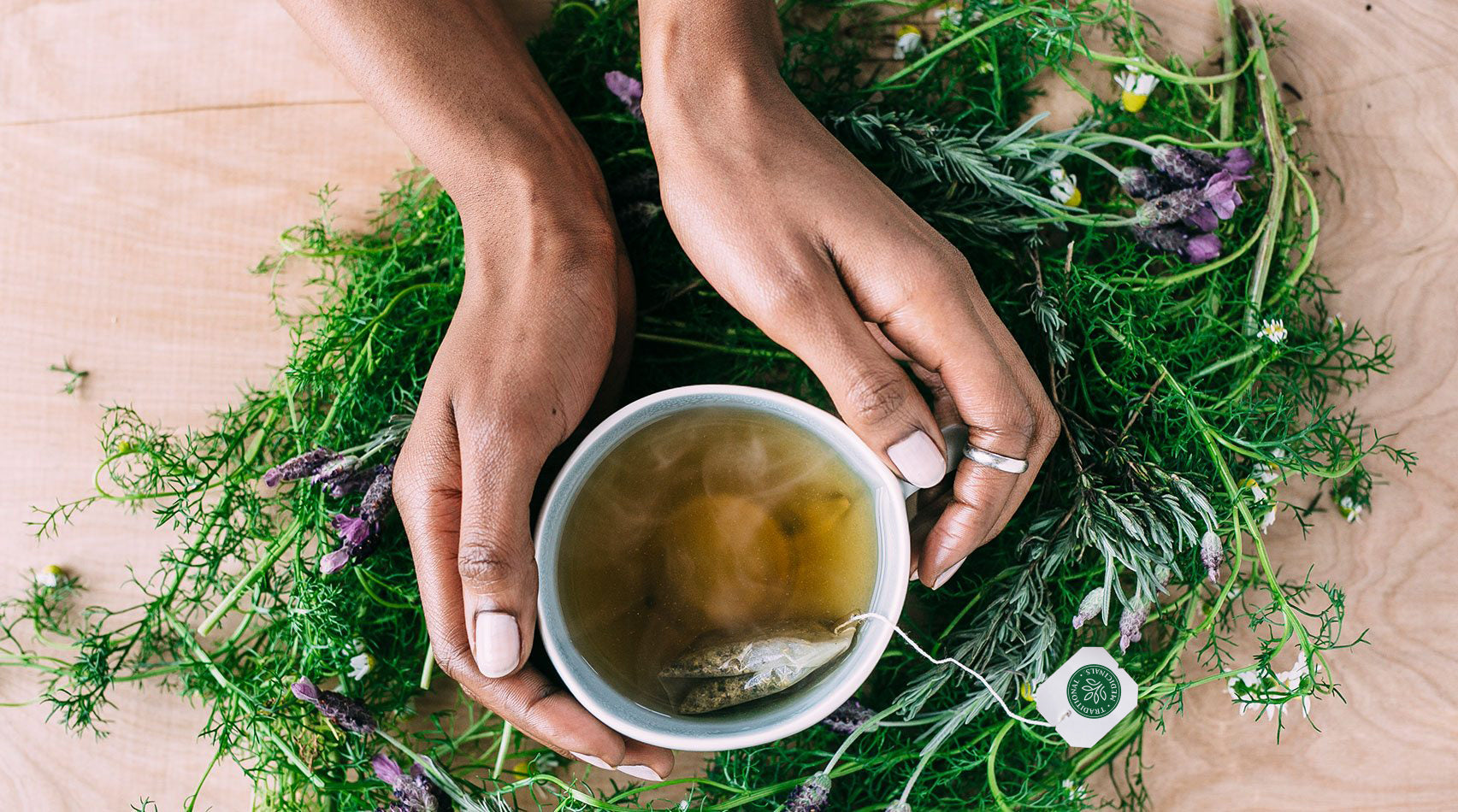
Chamomile was originally documented as a medicinal herb by Egyptians in the Ebers Medical Papyrus in 1550 B.C. They dedicated the power of chamomile to the sun and worshiped it above all other herbs. They offered it to their gods and used it as one of the main ingredients in their embalming oil for the mummification process. People in other cultures enjoyed chamomile while still living. Spaniards called the plant “manzanilla” which means “little apple,” and they infused the flowers into sherry. Others used its powers to ease tension and support digestion.
Lavender also has a rich history of traditional use. These fragrant purple blooms originally come from the Mediterranean region and have been used for thousands of years by the ancient Greeks, Romans, Arabs and Egyptians. Coincidently, it also was used by Egyptians to embalm the deceased. In the middle ages it was made into crosses and hung over doorways to ward off evil spirits, and it was one of the main ingredients in the Four Thieves Vinegar, a popular herbal preparation during the time of the plague. These days you can often see lavender used in aromatherapy to promote relaxation.
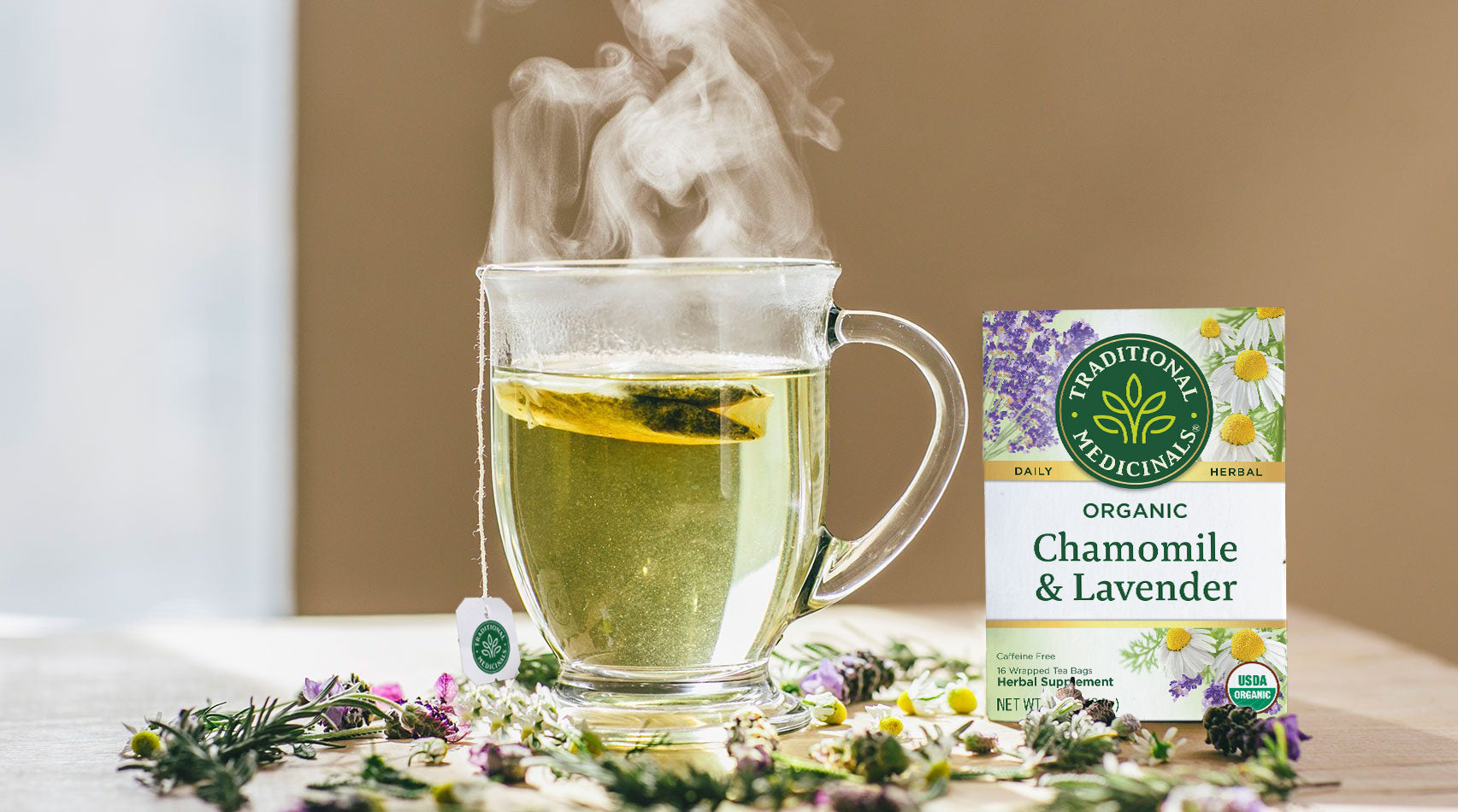
Our in-house botanical microscopist captures detailed images of our herbs through the lens of a microscope. This is just one of the many steps our quality control department takes to analyze our herbs and ensure that they’re pharmacopoeial grade, which basically means we make sure our teas work. Below (from left to right) you can see chamomile flowers growing and then an image of the petal tissue. On the tissue there are oval like papillose cells and droplets of essential oils at the end of the petal. These essential oils are a huge part of chamomile’s plant power.
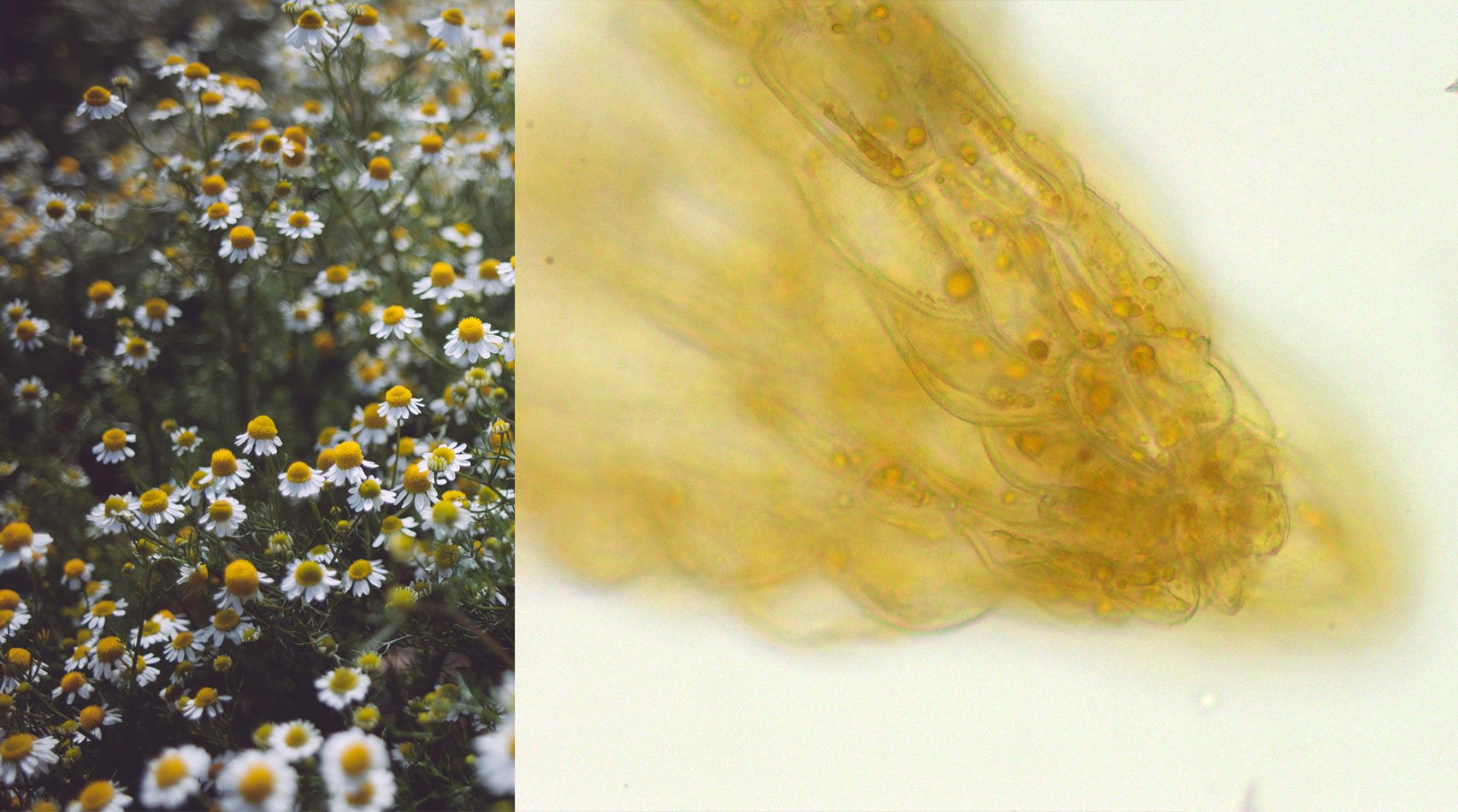
In this image below you see lavender and next to it a close up of prism crystals on its flower head, one of its main identifying features.
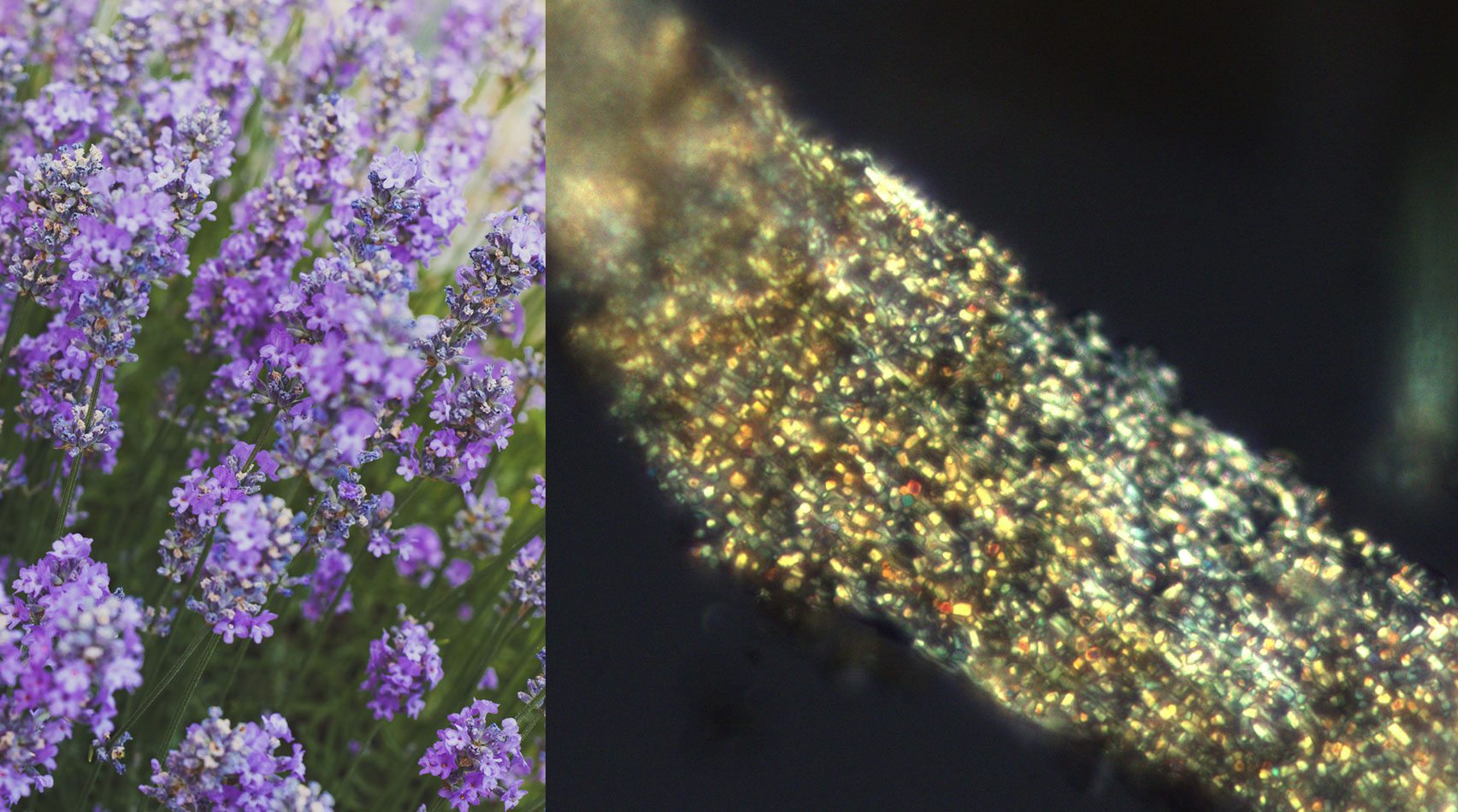
These two herbal allies are widely known but aren’t always acknowledged for their gentle (yet powerful) herbal medicine. Each of these plants reminds us to relax now and not to wait to take care of our needs later. Our Chamomile with Lavender tea is fragrantly floral and bittersweet, and has a touch of lemon balm in it for extra herbal power. And while we prepare these plants traditionally, there are many fun ways to infuse them into your daily life. You can enjoy chamomile lavender scones, lavender lemonade or a simple herbal footbath. We encourage you to get creative!
*Please note that the lavender in our first two photos is Spanish lavender or Lavandula stoechas in Latin. We use Lavandula angustifolia in our teas, but we decided to photograph what we had handy in our garden at that time. There are 39 species in the genus Lavandula, and many different varieties of some of the species, selected for either appearance or quality and effects of their essential oil.


